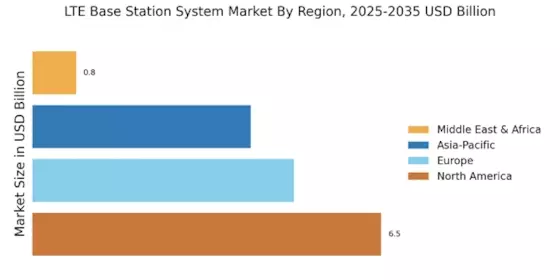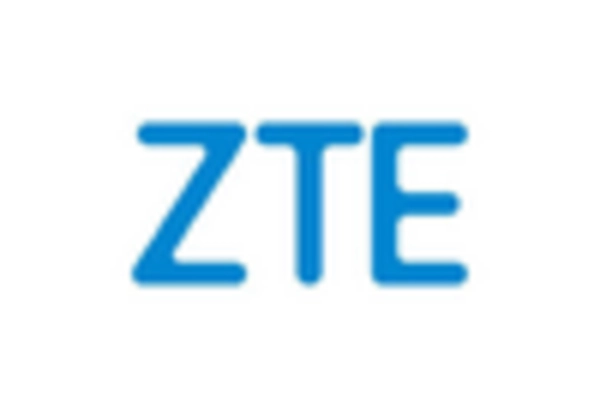Rising Mobile Data Traffic
The LTE Base Station System Market is experiencing a surge in mobile data traffic, driven by the proliferation of smartphones and mobile applications. As users increasingly rely on mobile devices for streaming, gaming, and social media, the demand for robust LTE infrastructure intensifies. According to recent statistics, mobile data traffic is projected to grow exponentially, with estimates suggesting a compound annual growth rate of over 30 percent in the coming years. This trend necessitates the deployment of advanced LTE base stations to accommodate the escalating data requirements, thereby propelling the market forward. The need for enhanced capacity and coverage is paramount, as service providers strive to deliver seamless connectivity to meet consumer expectations. Consequently, investments in LTE base station systems are likely to rise, reflecting the industry's response to this burgeoning demand.
Emergence of IoT Applications
The emergence of Internet of Things (IoT) applications is significantly influencing the LTE Base Station System Market. As industries increasingly adopt IoT technologies for automation and data collection, the demand for reliable and high-speed connectivity becomes critical. LTE networks are well-suited to support a vast number of connected devices, making them an ideal choice for IoT deployments. Market analysts indicate that the number of IoT devices is expected to reach billions in the next few years, further driving the need for robust LTE infrastructure. This trend is particularly evident in sectors such as smart cities, healthcare, and industrial automation, where real-time data transmission is essential. Consequently, the growth of IoT applications is likely to propel investments in LTE base station systems, as service providers seek to enhance their network capabilities to accommodate this burgeoning ecosystem.
Technological Advancements in LTE
Technological advancements in LTE technology are a key driver of the LTE Base Station System Market. Innovations such as Massive MIMO, beamforming, and network slicing are enhancing the efficiency and performance of LTE networks. These advancements enable service providers to optimize their existing infrastructure, thereby improving user experience and increasing network capacity. The introduction of 5G technology is also influencing the LTE landscape, as many operators are upgrading their LTE systems to support 5G capabilities. Market data suggests that the transition to advanced LTE technologies could lead to a significant increase in network efficiency, with potential improvements in data rates and latency. As a result, the ongoing evolution of LTE technology is likely to stimulate investments in base station systems, as operators seek to remain competitive in an increasingly demanding market.
Government Initiatives and Policies
Government initiatives and policies play a pivotal role in shaping the LTE Base Station System Market. Many countries are actively promoting the expansion of telecommunications infrastructure to enhance connectivity and support economic growth. Regulatory frameworks are being established to facilitate the deployment of LTE networks, often accompanied by funding and incentives for service providers. For instance, various governments have allocated substantial budgets to improve rural connectivity, which in turn drives the demand for LTE base stations. These initiatives not only aim to bridge the digital divide but also stimulate competition among service providers, leading to increased investments in LTE technology. As a result, the market is likely to witness accelerated growth, driven by favorable government policies that encourage the adoption of advanced telecommunications solutions.
Growing Competition Among Service Providers
Growing competition among service providers is a notable factor driving the LTE Base Station System Market. As the telecommunications landscape becomes more saturated, operators are compelled to enhance their service offerings to attract and retain customers. This competitive environment encourages investments in LTE infrastructure, as providers strive to deliver superior connectivity and coverage. Market trends indicate that operators are increasingly focusing on expanding their LTE networks to underserved areas, thereby enhancing their market share. Additionally, the introduction of bundled services and competitive pricing strategies further intensifies this competition. Consequently, the need for advanced LTE base station systems is likely to increase, as service providers seek to differentiate themselves in a crowded marketplace. This dynamic is expected to foster innovation and drive growth within the LTE base station system sector.


















Leave a Comment